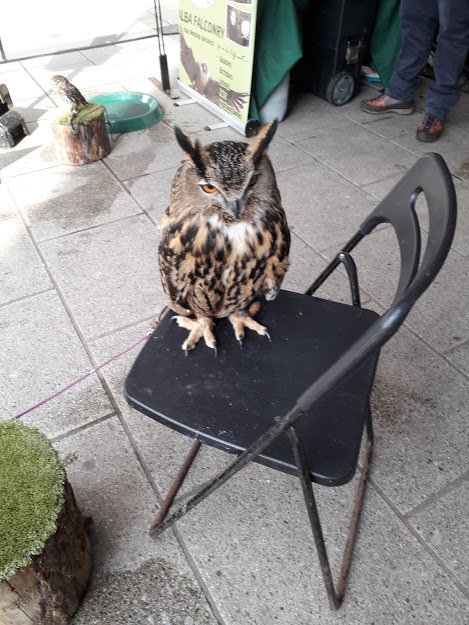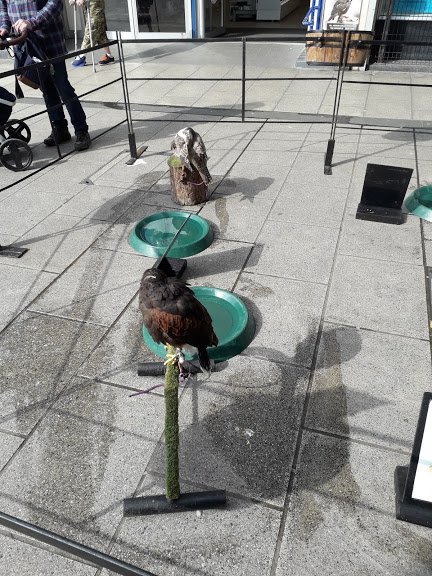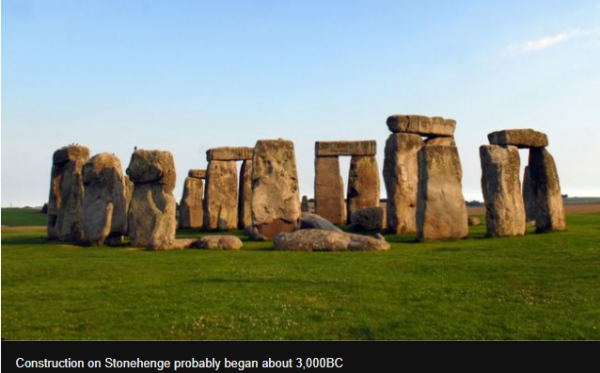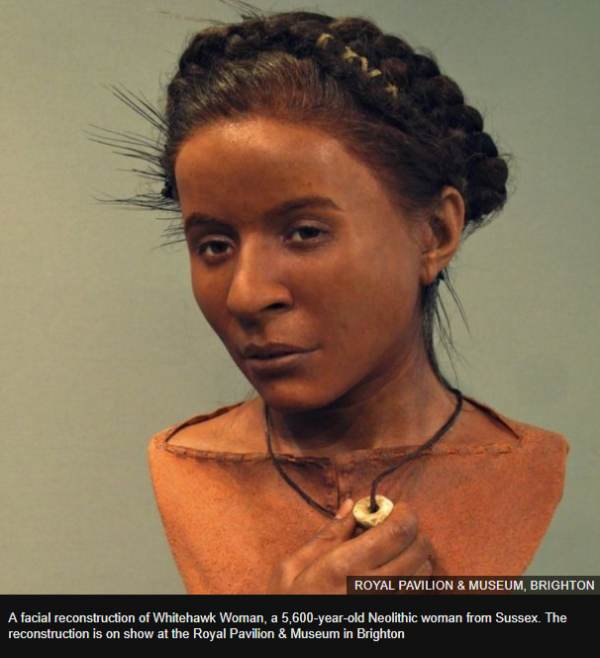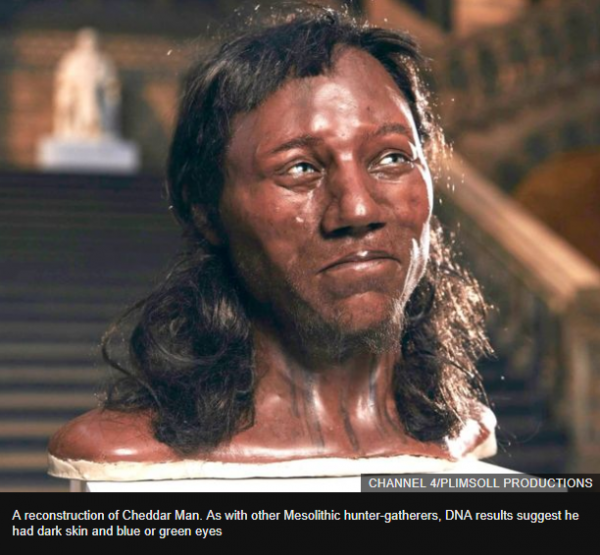-
Posts
20,842 -
Joined
-
Last visited
-
Days Won
49
Everything posted by CaaC (John)
-
-
Homeless Australian man reunited with lost rat pet by police https://www.bbc.co.uk/news/world-australia-47986147
-
A £10 donation only works out at £2.50 a week so I don't think anybody can moan about that in keeping this place running, I just won £10 on a £1 scratch card so when I put my donation in at the end of the month I will not be out of pocket.
-
Aaron Ramsey: Arsenal midfielder suffers suspected hamstring injury Aaron Ramsey may have played his last game for Arsenal after a suspected hamstring injury during their Europa League quarter-final against Napoli. The midfielder, 28, pulled up in the 33rd minute and was replaced by Henrikh Mkhitaryan. Ramsey has agreed on a four-year contract that will see him join Juventus as a free agent this summer, ending his 11-year spell with Arsenal. The typical recovery time for a minor hamstring injury is four to six weeks. Arsenal have five Premier League games remaining. https://www.bbc.co.uk/sport/football/47984351
-
Hercules, 922-Pound Liger, Is The World's Largest Living Cat (PHOTOS) The Huffington Post With a name like Hercules, you know he's got to be big. But at 922 pounds, big is an understatement for the world's largest living cat, according to the 2014 Guinness Book of World Records. Hercules is a liger -- the hybrid offspring of a male lion and a tigress -- who lives at the Myrtle Beach Safari wildlife preserve in South Carolina. He is 131 inches long and measures 49 inches tall at the shoulder. Ligers, which do not exist in the wild, can grow to twice the size of their parents and weigh about a hundred times more than the average house cat. The safari, also known as TIGERS –- The Institute of Greatly Endangered and Rare Species –- where tours are given by reservation, is owned by Bhagavan “Doc” Antle, who also founded the Rare Species Fund in 1982, to help endangered wildlife around the world such as elephants, rhinos, orangutans and other big cats. https://www.huffingtonpost.co.uk/2013/09/13/hercules-liger-worlds-largest-cat-photos_n_3920158.html?guccounter=1&guce_referrer=aHR0cHM6Ly93d3cuZ29vZ2xlLmNvbS8&guce_referrer_sig=AQAAAF6GBiQXP_KePy9YtAF14BVc6GIPrtt6ft-zcqlmc0gFJ8bzzFqAjThuVII14Q2AR0CY-t3dnihTlS_jEfeXQLNatxzcvzX5tvilhpmp_76VfhOJlSmkWXoZsJnDXp0Zq3BDyX6PJQ4i_8pSjBXsvHX7Xkl_nLD0BzkOLIsZoiRC
-
Ajax: Do the Dutch giants have the right formula to succeed once more? Are we witnessing the re-emergence of Ajax as a force in European football? The four-time European champions - who gave the world Johan Cruyff, Patrick Kluivert, Marco van Basten and Dennis Bergkamp - have gone from the 2017 ignominy of failing to qualify for a Uefa competition to earning a place in the Champions League semi-finals. Is this a fluke? Or should it come as no surprise? Former academy player Jordi Cruyff, Johan's son, told BBC Radio 5 Live's Euro Leagues Podcast that De Godenzonen (Sons of the Gods) now have all the right ingredients. 'They've found a balance of youth and experience' Barcelona-bound Frenkie de Jong, 21, defender Matthijs de Ligt, 19, winger David Neres, 22, and Hakim Ziyech, 26 - plus the more experienced Dusan Tadic, Klaas-Jan Huntelaar and Daley Blind - have helped Ajax not only overachieve in Europe but also lead the Eredivisie. "Ajax at the moment have an amazing generation. The chemistry is there. "They have a few players at 19, 20, 21 years of age - which comes every 10 years or so. The club are now benefiting, on and off the pitch, from having these good young stars. "One of those has been sold to Barcelona [De Jong], but they have this golden hand. "They have also changed something this season. They have not won the Dutch league since the 2013-14 season - in contrast to what they achieved this week and having reached the 2017 Europa League final - and have made some adjustments. "The team has young talent, but in every part of the pitch, they have players with experience after spending some money to bring in Tadic and Blind. "I think the experienced ones have guided the young and brought some balance. "Ajax are now playing excellent football and lead the Dutch league from PSV Eindhoven on goal difference." 'A selling club, but in a better financial position' "The reason Ajax haven't been in the Champions League semi-finals in recent years is because they cannot compete with the likes of the moneyed Premier League, La Liga and Bundesliga teams. "They are a selling club and the Netherlands is a selling country. It's not an end-station for players, it's a middle-station. It'll help you progress and it's somewhere that gives you a platform. "Ajax understand their position but are now in a good financial situation which means if there are six high offers for players, they don't have to accept all six. "If the central defender goes, Ajax have a back-up as a result of the forward thinking of bringing players in a few years ago. "This year everything came together - the change of policy of bringing in older players helped them a lot and gave them the stability they need. "But you can't argue with fact that Ajax is a school of education. It has been like this for many, many years and will continue to be for many, many years." Can they win the Champions League this season? "When you're in the last four and eliminate Real Madrid and Juventus en route - winning at their grounds - then that's not a coincidence any more. You have a right to dream. "Liverpool are having an excellent year and Barcelona, as long as Lionel Messi is fit, will be favourite in every game they play. "Now it's about the small details that can decide things. Ajax, for sure - the win in Italy will make them think they can beat anybody on their day." https://www.bbc.co.uk/sport/football/47979324
-
Professional footballers to boycott social media for 24 hours in racism protest Professional footballers in England and Wales are to boycott social media for 24 hours on Friday, to protest against the way social networks and football authorities respond to racism. It follows a number of high-profile incidents in domestic and international matches this season. Earlier this week, Manchester United captain Ashley Young was racially abused on Twitter. And Watford captain Troy Deeney said, "enough is enough". "On Friday we are sending a message to anyone that abuses players - or anyone else - whether from the crowd or online, that we won't tolerate it within football," said Deeney, who disabled comments on his Instagram after abuse earlier this month. "The boycott is just one small step, but the players are speaking out with one voice against racism." How is football tackling racism on social media? Racist chanting was directed at several England players including Danny Rose during a Euro 2020 qualifier in Montenegro last month - the Spurs defender later said he "can't wait to see the back of football". "I don't want any future players to go through what I've been through in my career," said Rose. "Collectively, we are simply not willing to stand by while too little is done by football authorities and social media companies to protect players from this disgusting abuse." The #Enough campaign, organised by the Professional Footballers' Association, starts at 09:00 BST on Friday and runs until 09:00 BST on Saturday. Players have been encouraged to post a #Enough graphic on their social media platforms before the boycott. Manchester United defender Chris Smalling added: "The time has come for Twitter, Instagram and Facebook to consider regulating their channels, taking responsibility for protecting the mental health of users regardless of age, race, sex or income." The PFA said the boycott was the "first step in a longer campaign to tackle racism in football". "The boycott acts as a show of unity by the players, and a call for stronger action to be taken by social networks and footballing authorities in response to racist abuse both on and off the pitch," the PFA said in a statement. Young was abused after United's Champions League exit to Barcelona on Tuesday. Accounts identified in this case as violating Twitter's abusive behaviour policy have been prevented from posting again until the offending tweets have been removed. https://www.bbc.co.uk/sport/football/47982403
-
Nah, this is good old @Bluewolf
-
-
A Massive asteroid will pass closer to Earth than the Moon, Nasa warns Anthony Cuthbertson An asteroid purportedly the size of a 10-storey building will pass by the Earth at half the distance to the Moon, Nasa has warned. Asteroid 2019 GC6 will pass within roughly 136,000 miles of Earth on Thursday, safely avoiding a devastating collision. Nasa warned the orbital trajectory of the asteroid means it may still pose a risk in the future, with estimations suggesting it could be anywhere between 7.5 metres and 30 metres in length. Shortly after it was discovered on 9 April by astronomers at the Catalina Sky Survey in Arizona, scientists at Nasa’s Jet Propulsion Laboratory in California placed it on a list of asteroids that risk colliding with Earth in the next 100 years. It is difficult to accurately predict its exact path but it is set to pass close to the Earth again in 2034, 2041 and 2048. It is not uncommon for rogue space debris to collide with Earth, with tons of cosmic material passing through the atmosphere every day. The vast majority burns up before it reaches the ground, but every decade or so a larger asteroid collides with Earth. In 2013, an asteroid 20m in diameter entered the Earth’s atmosphere over the city of Chelyabinsk in Russia, causing a massive explosion. A subsequent study calculated it released more than 30 times the explosive energy of the Hiroshima bomb, contributing to more than 1,500 people in the local area seeking medical treatment. “If humanity does not want to go the way of the dinosaurs, we need to study an event like this in detail,” Professor Qing-Zhu Yin of the University of California said at the time. “Chelyabinsk serves as a unique calibration point for high-energy meteorite impact events for our future studies.” But due to their relatively tiny size, asteroids are notoriously difficult to spot and often go undetected until a few days before they are due to pass or collide with Earth. © Provided by Independent Digital News & Media Limited The impact site of the main mass of the Chelyabinsk meteorite in the ice of Lake Chebarkul (PA) Astronomers at the Jet Propulsion Laboratory recently described it as like spotting a lump of coal in the night’s sky. “Near-Earth objects [NEOs] are intrinsically faint because they are mostly really small and far away from us in space. Add to this the fact that some of them are as dark as printer toner, and trying to spot them against the black of space is very hard,” said Amy Mainzer, principal investigator of Nasa’s asteroid-hunting mission at the lab. “If we find an object only a few days from impact, it greatly limits our choices, so in our search efforts we’ve focussed on finding NEOs when they are further away from Earth, providing a maximum amount of time and opening up a wider range of mitigation possibilities.” https://www.msn.com/en-gb/news/techandscience/massive-asteroid-will-pass-closer-to-earth-than-the-moon-nasa-warns/ar-BBW2aAC?ocid=chromentp
- 1,657 replies
-
- space exploration
- astronomy
-
(and 1 more)
Tagged with:
-
This new species of ancient carnivore was bigger than a polar bear Catherine Zuckerman The handful of mysterious fossils sat unstudied for decades, tucked safely in a drawer at the Nairobi National Museum in Kenya. But now, analysis of the ancient remains has revealed that they belonged to a giant meat-eating mammal larger than a polar bear, a newly described species that’s been dubbed Simbakubwa kutokaafrika. Reported this week in the Journal of Vertebrate Paleontology, the powerful predator prowled the Earth some 22 million years ago. Although Simbakubwa translates to “big lion” in Swahili, this behemoth was not a big cat. Instead, it is the oldest known member in a group of extinct mammals called hyaenodonts, so named due to their dental resemblance to hyenas, even though the groups are also unrelated. The discovery helps connect some of the evolutionary dots for this group of massive meat-eaters, which were near the top of the food chain in the same African ecosystems where early apes and monkeys were also evolving. The fossil may also help scientists better understand why these apex predators ultimately did not survive. The find “is a good chance for us to bring these other lesser known carnivorous predators to the surface,” says Jack Tseng, an evolutionary biologist and vertebrate paleontologist at the University at Buffalo who was not involved in the study. “Before the predecessors of modern carnivorans that we’re so familiar with—lions, hyenas, wolves—before they ever evolved, the global scene of predators was essentially dominated by these hyaenodonts." In 2013, paleontologist Matthew Borths was doing research at the Nairobi museum for his dissertation on the hyaenodonts, and he asked a curator if he could look at their specimens. There, he found the unusual fossils in a cabinet that was part of a collection marked “hyenas.” The fossils had been excavated between 1978 and 1980 at a site in western Kenya called Meswa Bridge. So Borths reached out to University of Ohio paleontologist and National Geographic grantee Nancy Stevens, who had discovered an important fossil site in Tanzania that’s only a couple of million years older. Their fate was sealed when Stevens told Borths that she had opened the exact same drawer while working in Nairobi and had wondered about its contents. “It was like the two of us could commiserate, like, Isn’t this amazing, we should do something!” Borths says. Stevens later asked Borths to join her lab as a postdoctoral researcher, and together the two returned to the Nairobi National Museum in 2017 to begin analyzing and describing the specimens, which included most of the animal’s jaw as well as bits of skeleton, skull, and teeth. Carnivores are often noted for their front canine teeth, which help grab prey, but their back teeth are important, too. “It’s in the back of the head that this business of slicing through meat takes place,” Borths says. All modern carnivores—including cats, dogs, racoons, wolves, and bears—have one pair of these meat-slicing teeth. Hyaenodonts had three pairs. “This animal had lots of blades,” Borth says. Aside from their fear factor, the teeth were key to helping the duo grasp the full picture of an extinct species. Without good teeth to study, Borths says, “it’s like having pieces from different sides of the puzzle, and nothing to connect the pieces in between.” Simbakubwa “brings together tooth information, a little bit of skull information, and a little bit of skeletal information to help unite a lot of this material that’s been floating around. It really helps contextualize this whole group of giant meat-eaters,” he says. “The science is definitely very impressive,” Tseng adds. “Any time you have a new record of something this large in the fauna and ecological food web, it makes you reconsider exactly what the interactions were like between predator and prey.” Adapt or die One of the goals of the research, which was partially funded by the National Geographic Society, was to put Simbakubwa in its family tree, Borths says. “Once you figure out the relationships between these animals, you can start to do things like estimate how big do you think the common ancestor of these creatures was, what was the world like when that theoretical common ancestor might have been alive?” he says. “You can experiment with the data a little bit to figure out how these big evolutionary changes map onto other changes, like climate change and continental drift.” As Africa got closer to Eurasia 20 million years ago, animals began to mix across continents, creating an ecological exchange that “raises all kinds of hell,” Borths says. And as the continents shifted and the East African rift began to rise up, ocean currents shifted, too. “All of those pieces are really fascinating natural experiments in how different groups adapt,” Borths says. Despite being large and in charge, Simbakubwa did not make it and even its relatives were extinct by the end of the Miocene epoch, roughly five million years ago. But why? The animal “was not built for failure,” Borths says, and it survived for a long time after hyaenodonts evolved in Africa and spread to Asia and Europe. But as a hypercarnivore, which by definition is an animal that gets more than 70 per cent of its calories from meat, it seems the predator was likely a casualty of rapid environmental change. Modern hypercarnivores, such as lions, hyenas, tigers, and wolves, “are among the most endangered mammals we have, and part of the reason for that is they’re so sensitive to environmental disruption,” Borths says. Because hypercarnivore populations are relatively small compared to other organisms, they suffer most when the food chain begins to destabilize. “Something put [Simbakubwa] over the edge,” Borths says. “Things changed too quickly, the prey species population didn’t come back fast enough, and these things ultimately went extinct.” https://www.msn.com/en-gb/news/world/this-new-species-of-ancient-carnivore-was-bigger-than-a-polar-bear/ar-BBW3Fzw?ocid=chromentp
-
The guy from the bird sanctuary back again in the square here in Leith, Edinburgh, donations are welcome so me and the wife normally throw a couple of quid in the bucket provided, he has some beautiful birds on show and the first photo I call 'Old Faithful' an owl he always brings and has been for the last 2 years or so.
-
One of these cars was not one of yours was it @Bluebird Hewitt?
-
You can add Borussia Dortmund for me if you want as I have always kept track of their matches over the years and nowadays as I was stationed in Dortmund in my army days (early 1970's).
-
Looking forward to this one
-
-

Newcastle United Discussion
CaaC (John) replied to a topic in Premier League - English Football Forum
Mike Ashley really pisses me off, instead of investing in Newcastle he buys companies and then starts sacking staff, looks like he is at it again, the twat is a British billionaire retail entrepreneur in the sporting goods market - https://en.wikipedia.org/wiki/Mike_Ashley_(businessman)#Ownerships -



.thumb.png.57ae5d3846529eabc413fdfd860ddcb2.png)
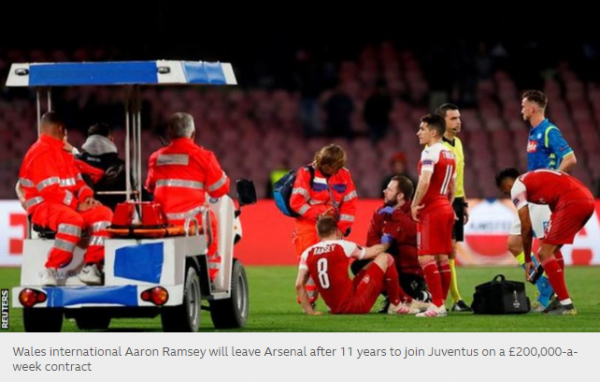
.thumb.png.5e8502cd8e414a46abbe0e78e14220f9.png)
.thumb.png.7dee24545f43a268a3e27f913ada6e78.png)
.thumb.png.8489094d72a6335fd6adfcdc961b9f99.png)
.png.366b0aa0d7c68ac515a5d27114a9f4a6.png)
.thumb.png.637cdae0b96115c0986bd867cbfb0985.png)
.thumb.png.b043ba0bc83f5220a5af63264428d697.png)
.thumb.png.ef6705a9274f261d75815eddb99234d9.png)
